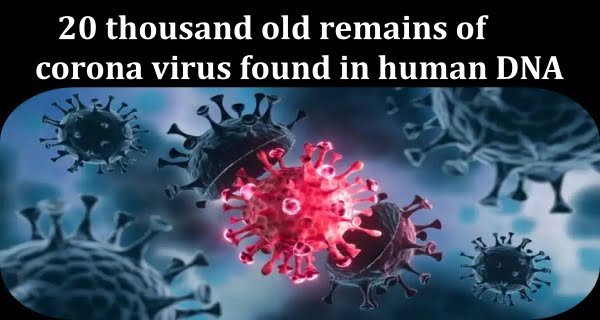
Canberra (Australia): The coronavirus, which is causing havoc around the world, may have wreaked havoc in East Asia more than 20,000 years ago, the remains of which are modern China (China), Japan (Japan), and Vietnam ( have been found in the DNA of the people of Vietnam. Our research, published in ‘Current Biology, has found evidence of genetic adaptation of the coronavirus family of viruses in 42 genes from modern populations in these regions.
Related Mars and SARS viruses also included
The Kovid-19 global pandemic caused by the coronavirus SARS-CoV-2 has so far killed more than 38 lakh people worldwide and caused billions of dollars in economic losses. The coronavirus family also includes related MARS and SARS viruses, which have caused many fatal infections over the past 20 years. Our results show how tracing the genetic remnants of historical viral outbreaks can help us treat future outbreaks. Global pandemics are probably as old as human history. We have faced global pandemics before.
Had killed millions
In the 20th century alone, each of the three types of influenza virus—the “Spanish flu” of 1918–20, the “Asian flu” of 1957–58, and the “Hong Kong flu” of 1968–69—have caused widespread devastation to millions of people. had taken his life. The history of infections caused by viruses and other pathogens goes back thousands of years. After the body adapts to these viruses, many genetic marks are left behind.
The remains exist today
Adaptation to disease can leave genetic traces Geneticists have developed impressive statistical tools over the past few decades to trace genetic traces of adaptation events to the body. These genetic remnants are present in the genomes of people today. Viruses are simple organisms that have one purpose: to make more copies of themselves. But their simple biological structure means they cannot reproduce independently. Instead, they have to invade the cells of other organisms and take over their molecular machinery. The virus interacts with and binds to specific proteins produced by the host cell, which we call viral interacting proteins (VIPs).

Traces of ancient coronavirus
We applied state-of-the-art computational analysis to the genomes of more than 2,500 people from 26 countries around the world. We found evidence of adaptation in humans to 42 different genes that describe VIP. These VIP signals were present in populations of only five locations, and all of these locations were from East Asia, a virus that is likely to have originated in the former of the coronavirus family. This means that the ancestors of modern East Asian countries have been exposed to the coronavirus about 25,000 years ago. Subsequently, further testing revealed that 42 VIPs are mainly found in the lungs, which are most affected by COVID-19. We have also confirmed that these VIPs directly interact with the SARS-CoV-2 virus responsible for the current pandemic. Other independent studies have also shown that mutations in the VIP gene can interfere with the susceptibility to SARS-CoV-2 and the severity of its symptoms. In addition, several VIP genes are either currently being used as drug targets for COVID-19 treatment or are part of clinical trials.





















































